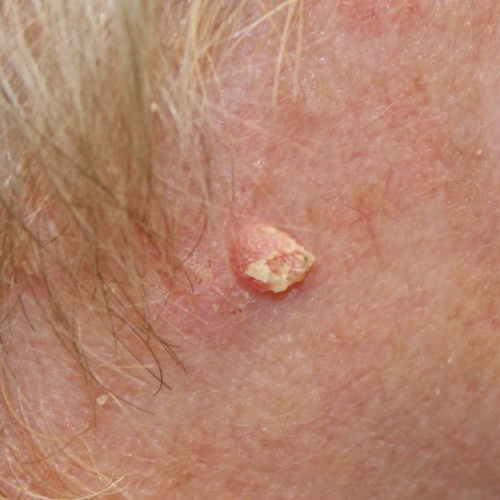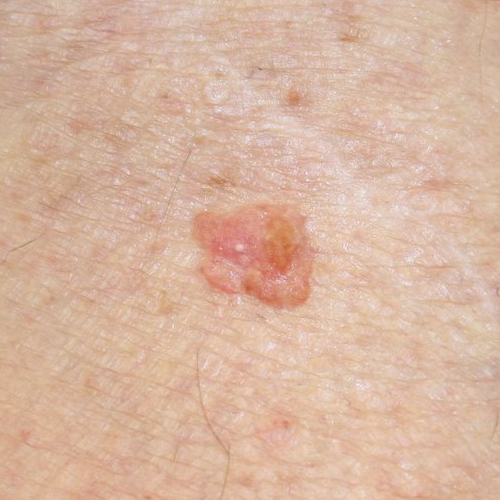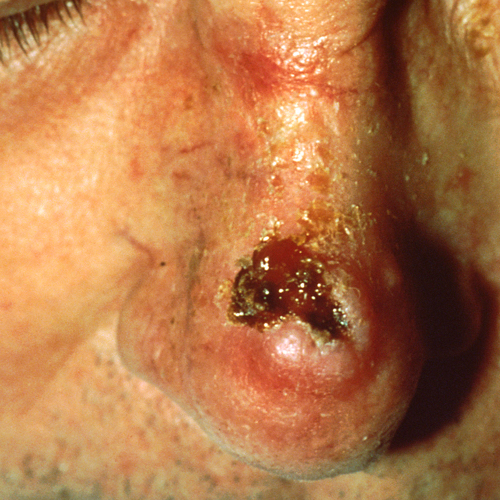What Does Squamous Cell Carcinoma Look Like?
Reviewed by: HU Medical Review Board | Last reviewed: May 2017. | Last updated: July 2021
Squamous cell carcinoma (SCC) develops when squamous cells begin to grow in an uncontrolled way. Squamous cells are the flat cells that make up the very top layers of epidermis. The epidermis is the outermost layer of skin.
SCC appears in many different ways. Descriptions of its typical appearance are below. However, it can be hard to identify a lesion correctly on your own. If you notice changes in your skin, discuss them with your primary care provider or dermatologist.
Where does squamous cell carcinoma develop?
SCC tumors are commonly found on body parts with frequent sun exposure, such as the face, ears, neck, lips, and back of the hand or forearm.1 SCC can develop in scars or sores.2 SCC in the nails, vulva, or anus occurs rarely.
What does squamous cell cancer look like?
SCC has many different appearances because there are different forms of this cancer. Actinic keratosis is a skin abnormality (precancer) that could lead to SCC.
SCC often looks like a rough, scaly red or brown patch.1-3 It may be thick or crusty. SCC may develop as a raised growth or lump; some look like they have collapsed in the center. SCC may also appear to be an open sore that bleeds easily and does not heal.
Bowen disease
Bowen disease is an early form of SCC. It is also called “squamous cell carcinoma in situ.” At this stage of disease, the cancer cells are only in the epidermis. It looks like a scaly red plaque and is larger than actinic keratosis.3
Keratoacanthoma
Keratoacanthomas are fast-growing tumors that appear on sun-exposed skin. They are usually treated as SCC, although experts debate whether they are actually cancerous.1,3 These lesions are firm and dome-shaped. They have a plug in the center that gives them the appearance of a volcano.
Verrucous carcinoma
Verrucous carcinoma is a less common form of SCC.3 It looks like a wart. It may grow on the foot, genitals, or in the mouth.
What symptoms of squamous cell carcinoma might I have?
A lesion might be the only sign of SCC; you may not have any symptoms. The lesion may bleed easily. You might think it is a cut or sore that will not heal. Some lesions itch.
What else could this skin lesion be?
Other conditions that may have a similar appearance as SCC are:4
- Dermatitis.
- Benign (harmless) skin tumors, such as atypical fibroxanthoma.
- Pyoderma gangrenosum, a condition characterized by large painful skin sores.
- Other skin cancers (basal cell carcinoma) or precancers (actinic keratosis, Bowenoid papulosis).


